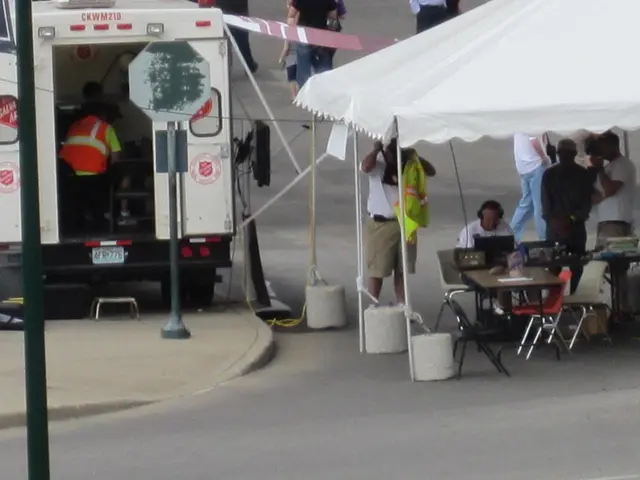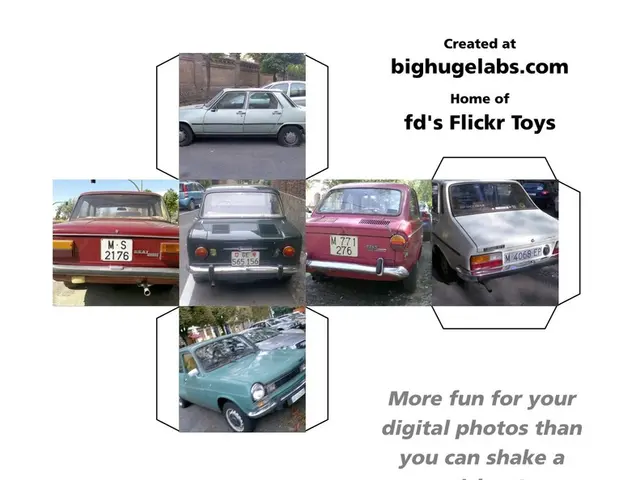Steering Clear of Crashes: Managing Car Exhaustion When Behind the Wheel
If you find yourself feeling tired while driving, here are some precautions to ensure safety: - Steer safely if you feel drowsy behind the wheel.
Getting drowsy while cruising down the road isn't a novel scenario for drivers. If you've been on the move for hours, this can be a recipe for disaster. Drowsiness and collisions - with potentially lethal outcomes - are on the table.
Case in point: A minibus with nine passengers toppled off the A48 near Koblenz approximately two weeks ago. Tragically, there were three fatalities and six injuries. The Public Prosecutor's Office in Koblenz suspects that the driver may have dozed off as the cause of the accident.
But how can you tell when you shouldn't be driving any longer? And what should you do in such situations? Here are some pointers, keeping holiday travelers in mind.
Recognizing Indicators During Driving
There are clear-cut signs a driver should pull over. These include excessive yawning or blinking. You're unable to concentrate properly and have trouble maintaining your lane. If you can't remember the last few miles well, or if you suddenly drive too slow or too fast - these are also clear signs of fatigue, per the ADAC.
Taking Breaks, Taking Breaks, Taking Breaks
Traffic gurus advise taking a break every two hours. A quick walk, stretching exercises, or a breath of fresh air will boost your circulation and perk you up again. A short snooze of 15 to 20 minutes on the parking lot can work wonders. However, stimulants like coffee or energy drinks only provide temporary relief. Loud music and open windows aren't suitable substitutes for a "power nap" (short sleep), a sleep researcher at the ADAC advises.
Tiredness Equals Higher Risk of Accidents
Tired drivers cause collisions with injuries or fatalities time and again. Because if you nod off for five seconds, you'd cover almost 140 meters at 100 km/h without even noticing, according to the ADAC.
Modern cars offer a variety of assistance systems to help detect fatigue and prevent collisions. For example, drowsiness warning systems use sensors to analyze driving behavior and register uneven steering or lane deviations. If the set values deviate too much, the driver receives a warning.
Collisions due to micro-sleep can also be reduced by emergency braking and lane-keeping assistants. They may possibly prevent driving into a traffic jam or veering off the road due to inattentiveness, or at least minimize the severity of the accident.
- Accident Risk
- Tiredness
- Koblenz
- ADAC
- Accident
- Fatigue
- Public Prosecutor's Office
- The accident in Koblenz that occurred two weeks ago, involving a minibus with nine passengers and resulting in three fatalities and six injuries, is suspected to be due to the driver experiencing fatigue.
- According to the ADAC, clear signs a driver should pull over include excessive yawning or blinking, trouble maintaining lane, inability to concentrate, and memory lapses about recent driving distances.
- The Public Prosecutor's Office in Koblenz is investigating the cause of the aforementioned accident, with tirelessness being a potential contributing factor.
- Research shows that even five seconds of micro-sleep at 100 km/h can cover nearly 140 meters, increasing the risk of accidents for tired drivers.
- The ADAC advises taking breaks every two hours during long drives, suggesting quick walks, stretching exercises, or brief naps to enhance circulation and combat fatigue.








